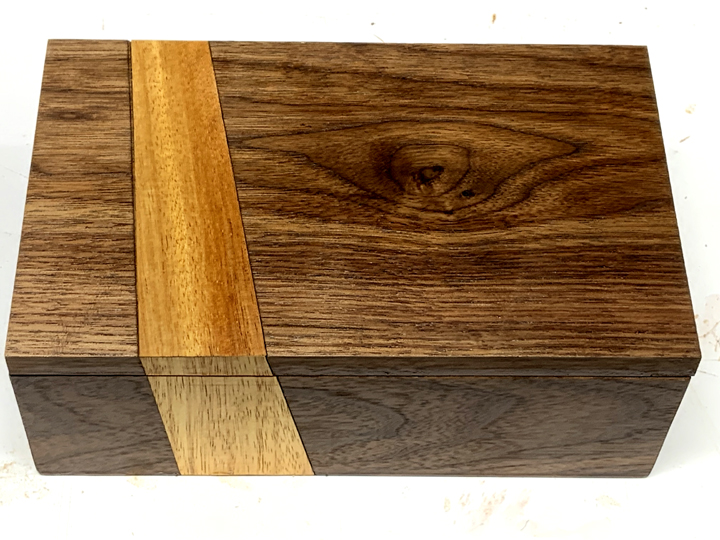
Walnut and Basswood Box - 181

Measures 8" long by 5" wide by 3.25" high. $40
Walnut– From Eastern United States. Heartwood can range from a lighter pale brown to a dark chocolate brown with darker brown streaks. Color can sometimes have a grey, purple, or reddish cast. Black walnut is important for its attractive timber, which is hard, dense, tight-grained and polishes to a very smooth finish. When kiln-dried, walnut wood tends toward a dull brown color, but when air-dried can become a rich purplish-brown. Because of its color, hardness and grain, it is a prized furniture and carving wood. Veneer sliced from walnut burl is one of the most valuable and highly prized by cabinet makers and prestige car manufacturers. Walnut is also used by makers of stringed instruments such as the violin and guitar and for the body of pipe organs.
Basswood - From eastern North America. Pale white to light brown color, with sapwood and heartwood sections not clearly defined. Growth rings tend to be subtle, and color is mostly uniform throughout the face grain of the wood. Knots and other defects are uncommon. Basswood is rated as being non-durable in regard to heartwood decay. Common uses carvings, lumber, musical instruments (electric guitar bodies), veneer, plywood, and wood pulp and fiber products. Basswood is an ideal wood for many woodcarvers. Its soft, fine, even texture make it easy to work with, while its pale, inconspicuous color doesn't detract from the carved patterns of the finished product (which also makes it easier to paint and color).
Though Basswood has high initial shrinkage, the wood is stable in service after it has been dried. And though the wood is both lightweight and soft, it has an outstanding MOE-to-weight ratio. However, its MOR is on par with its low weight; simply put, when put under stress, the wood will remain stiff, but will still break (rupture) at a relatively average weight.